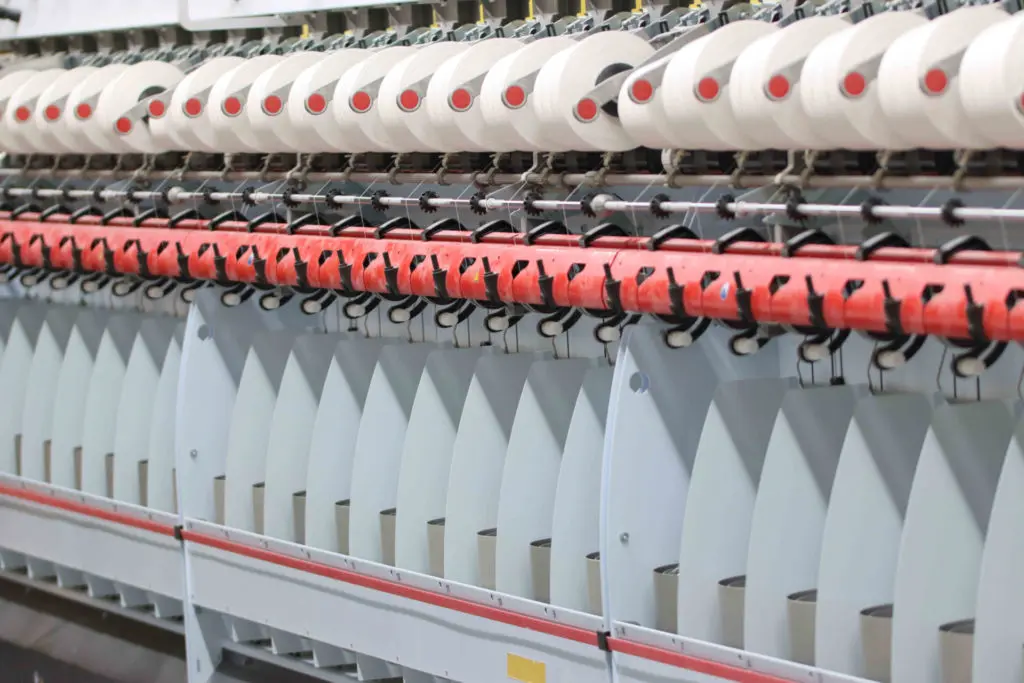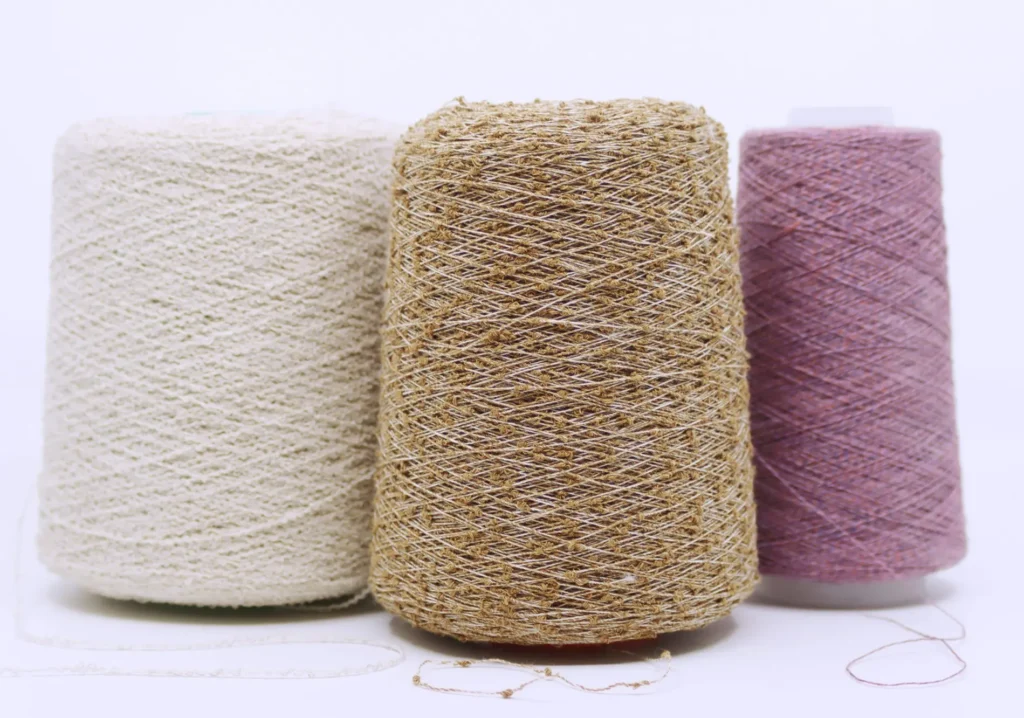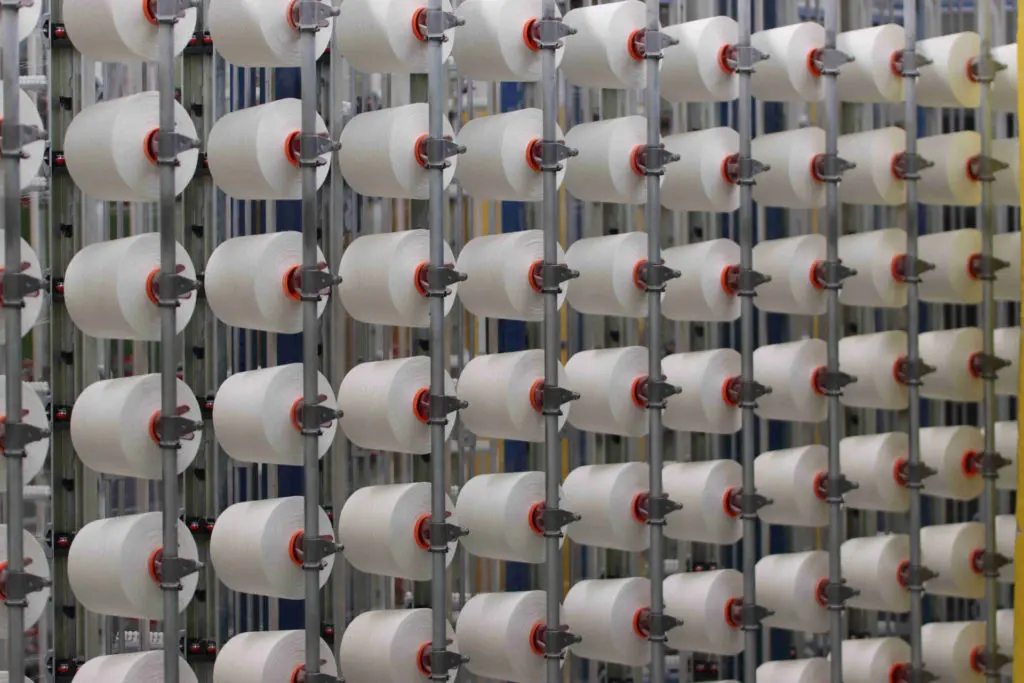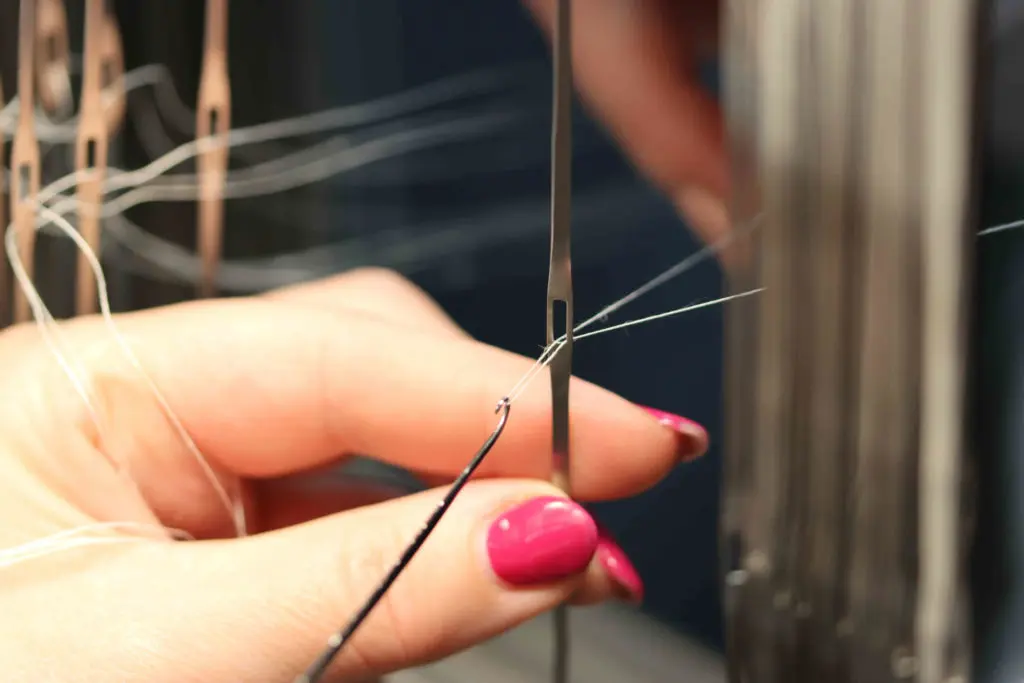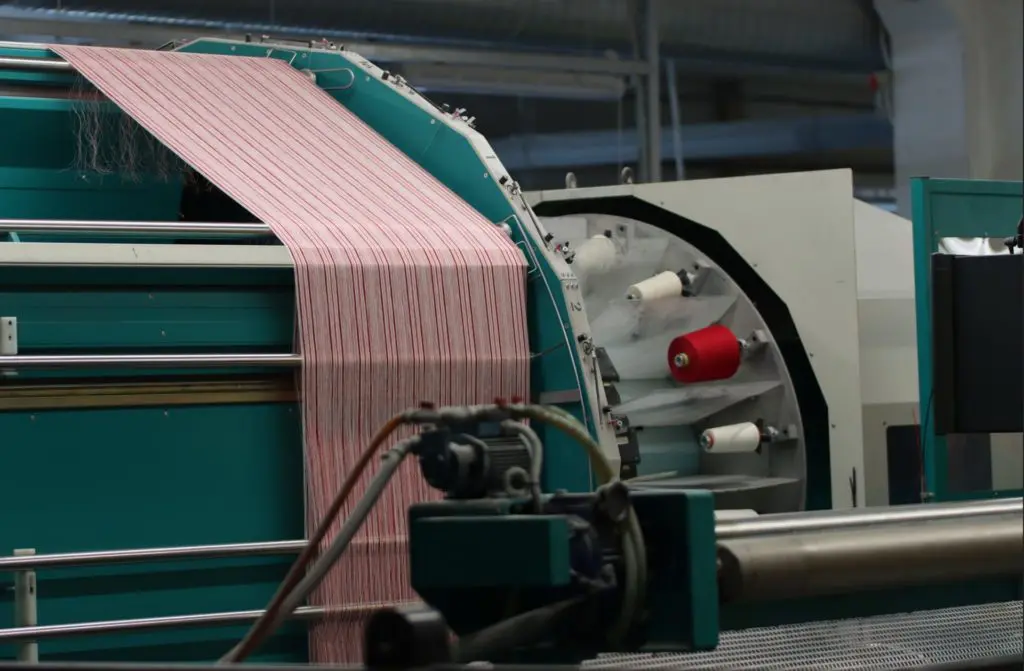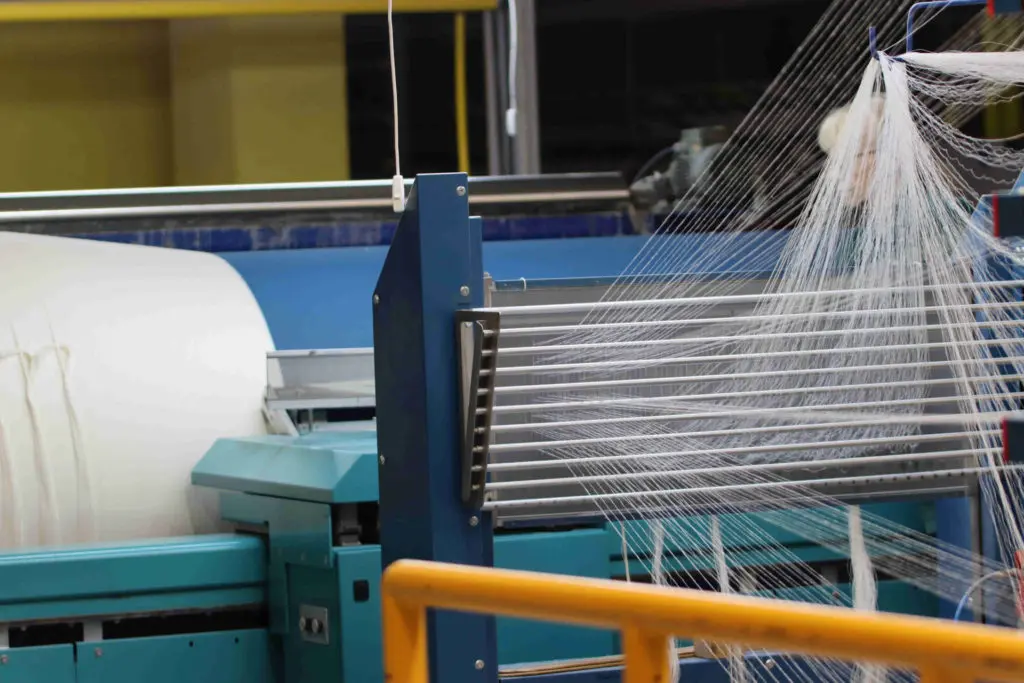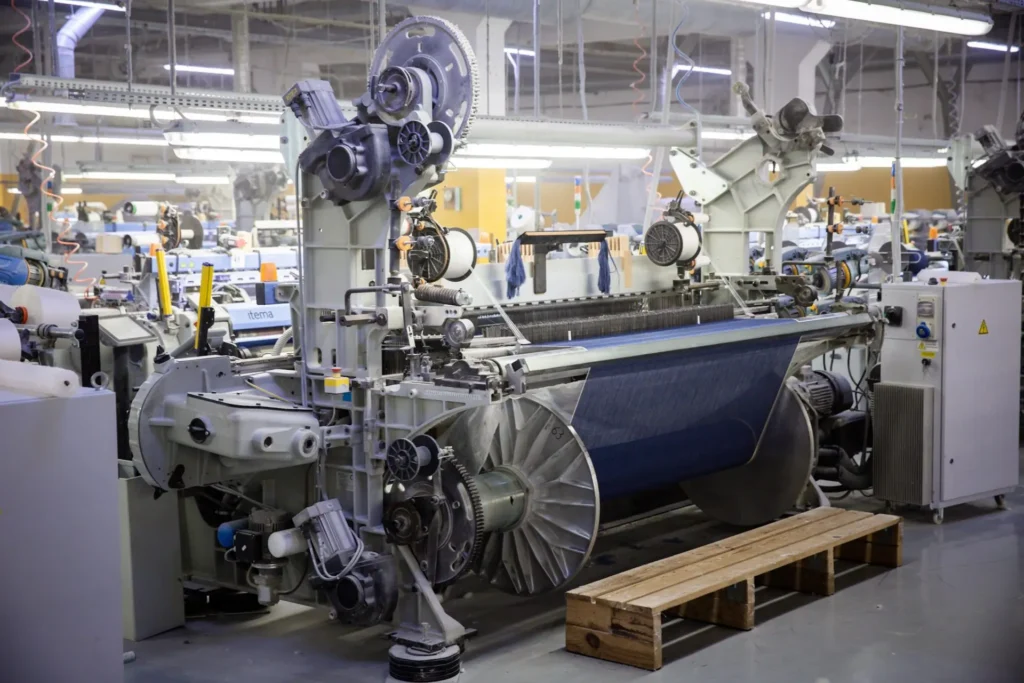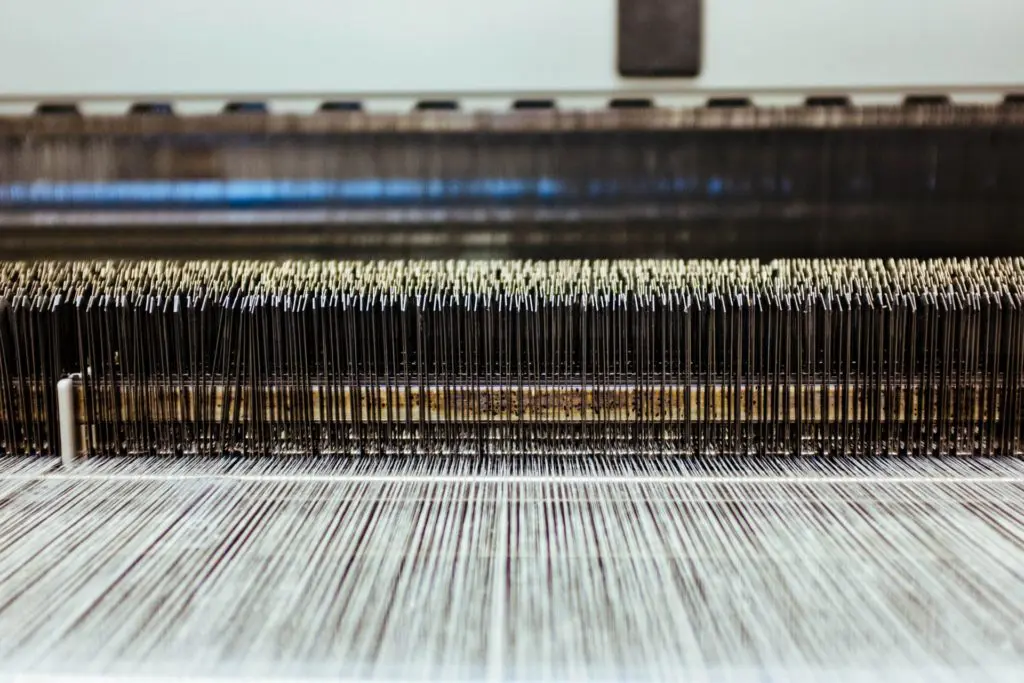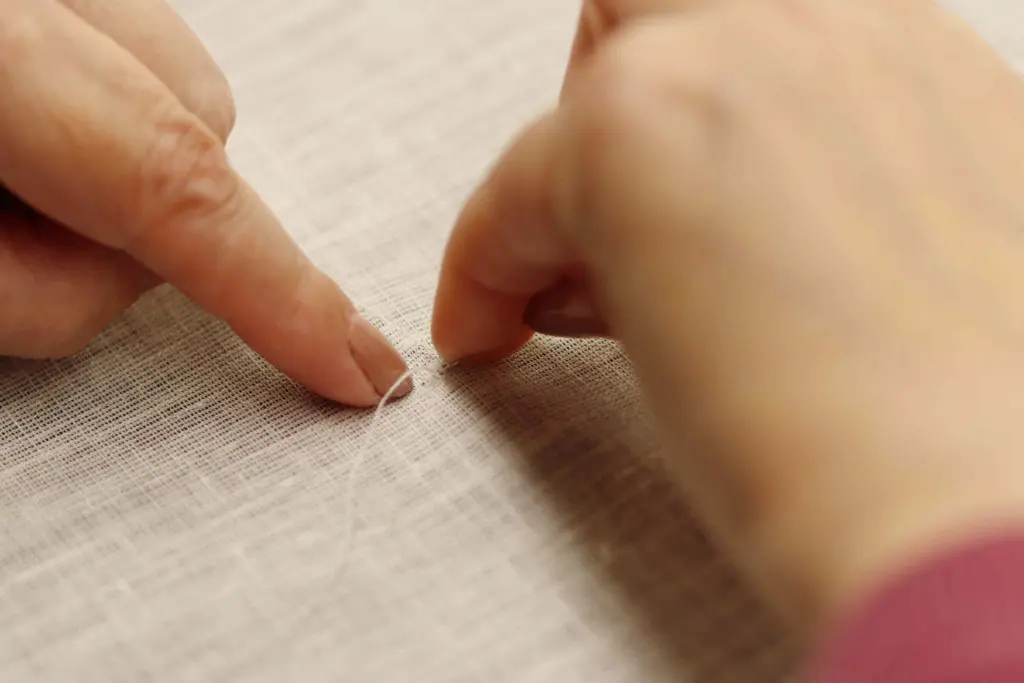Yarn rewinding and twisting are two important procedure before weaving process. This process also helps to make the yarn more uniform in terms of thickness and density, which is important for producing high-quality fabrics. Yarn twisting, on the other hand, is done to give the yarn more strength and elasticity. Twisted yarns are commonly used for heavy fabrics that are woven for furniture upholstery.
To prepare yarns for dyeing, it is necessary to rewind the yarn from original cone to special cones, soft winded. The new cone has a larger surface area, which allows for better penetration of the dye and ensures that the yarn is evenly dyed.
Our range of linen fabrics includes not only plain weaves but also fabrics with fancy yarns, which we twist on our fancy twisting machine. Fancy yarns are produced by twisting together two or more different types of yarns. Fancy yarns are characterized by their irregular or decorative features, such as knots, loops, or curls. Some examples of our fabrics with fancy yarns include bouclé (loop yarn), flamme (slub yarn), yarn twisted with metallized yarn and mouline yarns.

